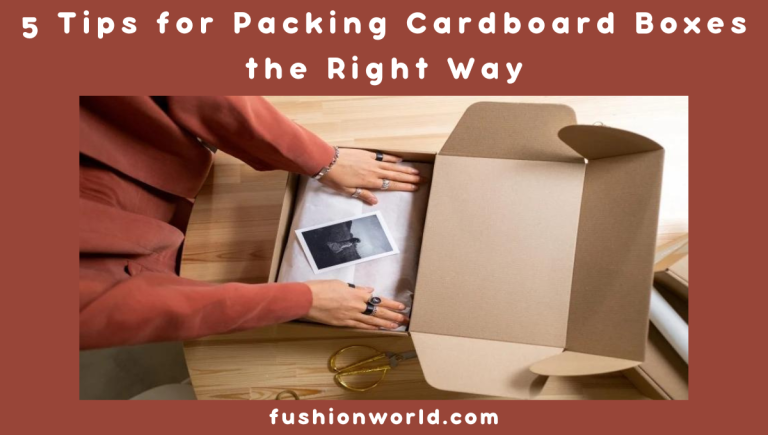Whether you’re planning a move, storing items for an extended period of time, or shipping goods, knowing how to pack cardboard boxes is essential. The proper technique can not only save time but also ensure the safety and integrity of your belongings. If you want some better ideas on how you can pack your boxes more efficiently and secure items more effectively, this article will detail five key tips.
Table of Contents
Selecting the Right Box
The first step involves selecting the right cardboard box. It’s crucial to choose a box that matches the size, weight and fragility of the items you intend to pack. A box that’s too large may lead to unnecessary movement during transit, while a box that’s too small may not provide sufficient space or strength to protect your items. Also be sure to consider the quality of the box. It goes without saying that sturdy and high-grade cardboard boxes are more likely to withstand pressure and wear. If the box you’re packing items into feels too flimsy in your hands, it probably is.
Prioritise Protection
Protection is crucial when packing cardboard boxes. Void fill and protective packing items such as bubble wrap, packing peanuts or even old newspapers are great for cushioning delicate items. For heavier objects, consider double-boxing. To double-box an item, place the item in a smaller box, then place that box within a larger one filled with padding material. This method provides an extra layer of protection and helps distribute weight evenly within the larger box.
Efficient Packing Techniques
Strategic packing can make a significant difference when it comes to utilising space and ensuring item safety. Start by placing heavier items at the bottom of the box, followed by lighter ones on top. Fill any remaining space with padding material to prevent movement. When packing fragile items, avoid placing them directly against the box walls. Instead, surround them with ample cushioning. This is because boxes can be subjected to various impacts during transit, such as being dropped, bumped or jostled. If a fragile item is placed directly against the box wall, it will bear the brunt of these impacts. Ample cushioning acts as a shock absorber, distributing the force of any impact and reducing the risk of damage to the item.
Proper Sealing
Proper sealing is vital to maintain the integrity of packed cardboard boxes. Use high-quality packing tape to seal the bottom and top flaps of the box securely. For heavier boxes, consider using reinforced tape for added strength. Ensure all edges and corners are sealed to prevent accidental openings during handling and transportation.
Labelling
Clear labeling of cardboard boxes is underrated but can significantly ease identification and handling. Write a brief description of the contents (if applicable) on the box’s top and sides. For fragile items, prominently mark the box as “Fragile” or “Handle with Care”. This step can ensure safer handling during transit and more straightforward unpacking upon arrival.
Conclusion
Packing cardboard boxes may seem like a simple task, yet doing it correctly can be a game-changer in terms of time efficiency, cost-effectiveness, and item safety. By selecting the right box, prioritizing protection, applying efficient packing techniques, ensuring proper sealing, and providing clear labeling, you can ensure your items will reach their destination in perfect condition.

